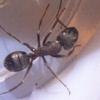Yes, Guizotia abyssinica. Thanks for the clarification.
- Formiculture.com
- Forums
- Gallery
- Members
- Member Map
- Chat

Yes, Guizotia abyssinica. Thanks for the clarification.
Thanks for clarifying.
What exactly are these "small-sized peas"?
Where's Antdude when I need him?
Over in grammar nazi land.
So do you know what these seeds are? I'm working on creating a nice mix of seeds to be used as a general Harvester Ant food, and I am trying tons of different seeds out.
From my experience i have only seen Pogonomyrmex eat grass seed once, they seem to collect them but never really consume them. However i have seen them eat herbacious dicot plants such as dandelion seed 99% of the time. I am throughly convince that they prefer small dicot seeds over grass seeds, it could be that the sillica contain in grass seed might interfered with digestion or maybe the seed itself is too hard. Also insect are chosen over seeds of anykind, they seem to prefer small crunchy bugs like mosquitos or small flies over squishy insect like caterpillar.
Queen will also take in fluids, the key is to keep it really diluted because it will evaporate inside the test-tubes. I always find good success with diluting 10 part sugar to 1 part whey protein, that's pretty much how I feed my formica and Camponotus queens..
Edited by Anhzor, July 15 2014 - 9:47 PM.
Aside from occasionally chewing on insect and laping up some honey water in young queen, I have never seen a mature Pogonomyrmex queen eat. I theorize that they probably get their food from their larvae regurgitate, that's cause I seen them (the queens) occasionally lick the mouth of larvae.
I noticed they keep the larvae on their backs and set the food right on their faces so they can chew on it. I actually recently gave my pogos some millet too. Poppy seeds can come as raw seeds in a bag for growing poppies, or from the grocery store for use in cooking. Does anyone know what exactly the difference is?
just out of curiosity, are poppy seed softer or harder then grass seed?
Depends which ones you're talking about. The ones used in cooking are softer than grass seed, while the ones that will grow into a poppy plant seem to be harder than grass seed.
Don't forget, no matter what it seems, adult ants only eat liquids. Only larvae can eat solid food.
0 members, 0 guests, 0 anonymous users